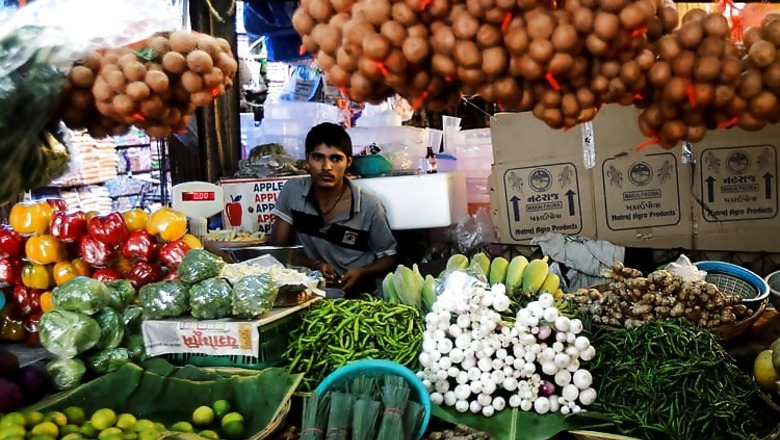
views
New Delhi: India's industrial production output grew more than expected in April, reaching a two-month high, and retail inflation edged up in May, easing concern over an economy facing the worst drought since 2009.
Output at factories, mines and utilities grew at an annual rate of 4.1 per cent in April, the fastest pace since February. That was higher than March's 2.5 per cent growth and the 1.6 per cent economists forecast in a Reuters poll.
Consumer inflation in May rose to 5.01 per cent from 4.87 per cent in the previous month on higher energy costs. Economists polled by Reuters had expected retail prices to rise 5 per cent year-on-year.
The output data comes days after GDP data showed India outpaced China by growing 7.5 per cent in the March quarter. It supports the government's view that the world's fastest-growing major economy is gathering steam.
"We consider the economy is recovering," Finance Minister Arun Jaitley said hours before the release of Friday's data. "We are on a roadmap for a much higher growth."
The World Bank predicted on Thursday that India would be the fastest-growing major economy this year, expanding at a rate of 7.5 per cent, up from the previous forecast of 6.4 per cent.
The jump in output growth was primarily led by a pick-up in capital goods production and a rebound in consumer goods output.
Consumer goods, a proxy for consumer demand, grew an annual rate of 3.1 per cent in April compared with a 0.4 decline a month ago. Capital goods production, a gauge of investment activity, jumped 11.1 per cent year-on-year, faster than a 8.6 per cent growth in March.
"What we see is over the last three months, the seasonally adjusted growth in industrial production indicates a significant pick-up in economic activity," said R. Sivakumar, head of fixed income at Axis asset management.
"That is consistent with other indicators which show that there is a some pick-up in growth."
MONSOON WORRIES
But policymakers are worried about the prospect of a second straight year of drought for the first time in nearly three decades after the country's weather office forecast below- average rains this summer. Monsoon rains in June-September are vital for half of India's farmland that lacks irrigation.
Some economists say a dry spell could reduce headline growth to as low as 7 per cent in the fiscal year 2015/16 from 7.3 per cent last year. That would fall short of the government's 8.1-8.5 per cent estimate.
New Delhi hopes higher public spending on roads, railways and ports this year will shield the economy from the impact of sub-par rains.
But less rain could push up food prices, straining household budgets and crimping non-food spending. It would also make it tougher for the Reserve Bank of India to cut lending rates further to juice up growth.
New Delhi says it has enough grain stockpiled to contain any food price shock. As a pre-emptive measure, it has extended duty concessions on lentil imports and is ready to provide high-yielding seeds for replanting of crops.
"On inflation side, likely insufficient monsoon remains an issue," said Sujan Hajra, chief economist at Anand Rathi. "We don't expect any (interest) rate cuts for the current year at least."




















Comments
0 comment